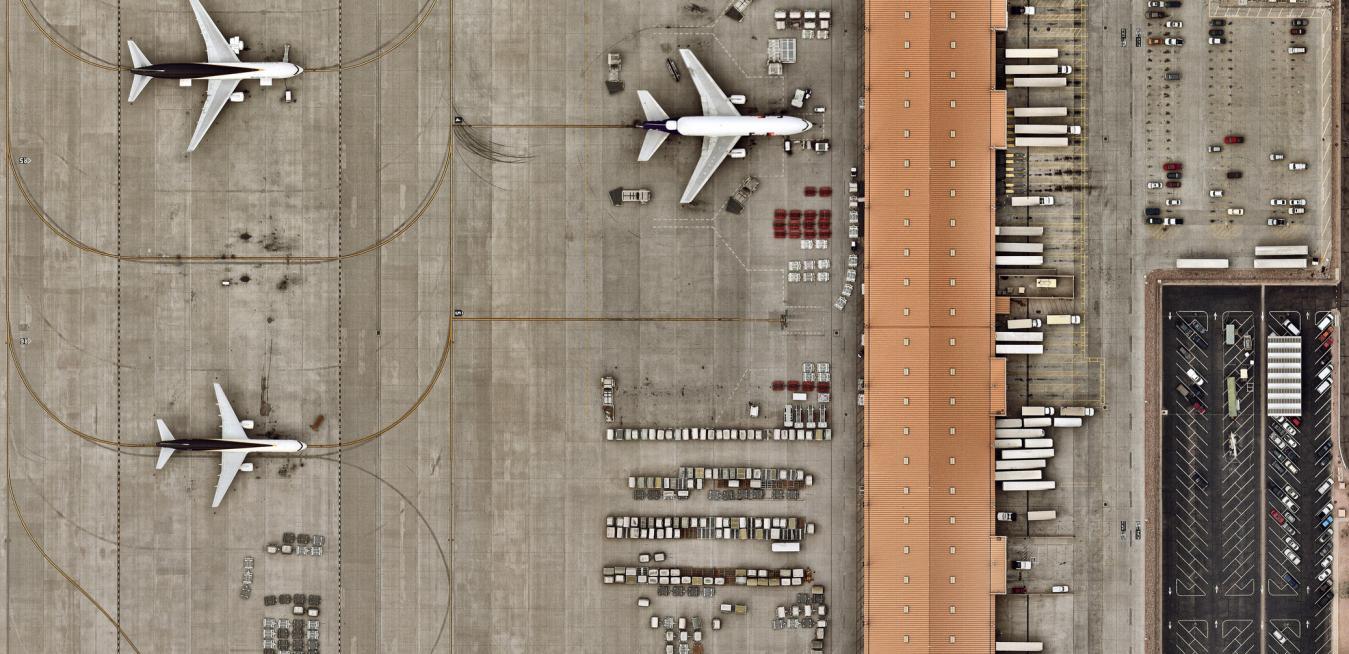As airlines recover from the economic distress wrought by the COVID-19 pandemic, they need to bring passengers back aboard their planes — safely. And to do that, they’re embracing powerful new technologies. Take, for example, a new mobile app developed by GE Aviation with TE-FOOD, which uses blockchain to track goods through the food supply chain. That same tech can be adapted to help monitor whether planes, crews and passengers have cleared specific health and cleanliness checks before takeoff. “GE Aviation’s business model is predicated on airlines flying GE engines,” said David Havera, general manager of GE Aviation’s blockchain solutions. “Therefore we are doing everything we can to get passengers back into the air as soon as possible.”
Data in the cloud: Say a passenger wants to fly from New York to Europe. She could download the app, scan in her passport barcode and create her own quick-response, or QR, code. From there, she simply follows the airline’s instructions for adding any required medical-clearance documentation, which might include test results from a doctor. At the airport, an airline employee will scan her app to complete the boarding process before sending her to her seat — where the traveler can scan her tray table’s QR code to make sure it’s been cleaned since the previous flight. Havera and colleagues expect that aviation is only one sector in which such tech could fly: “Our goal is to not only turn around the aviation industry but also reignite hotels, ride-sharing services and the entire travel experience,” he said.
Learn more here about how blockchain could help the travel industry get back on its feet.
RECIPE FOR SUCCESS
The animal enrichment team at the Cincinnati Zoo & Botanical Garden turned to engineers at GE Additive to see if they could use 3D printing to help liven up mealtime for meerkats and other small mammals and birds. Take Mark, for example. Mark is a 5-year-old meerkat who lives at the zoo and — like many other 5-year-olds — Mark loves to play with his food. Out in the wild, Mark would spend his days foraging for meals with his family, snacking on everything from insects and reptiles to small mammals. That’s not quite an option in Cincinnati, so Mark’s keepers set out to replicate the experience: “We’re really focused on promoting natural feeding and foraging,” said David Orban, the zoo’s animal excellence manager. “What we try to do is provide opportunities for them to demonstrate those natural behaviors.”
Pass the crickets, please: 3D printing, which uses lasers or electron beams to melt fine layers of powder together to produce a computer-designed object, is more commonly associated with jet engine components and car parts. But working with the zoo, GE Additive engineers could let their imaginations go wild. They eventually worked up a device that mimics the exterior of a tree trunk. Embedded with metal tubes of varying lengths, the feeder could be filled with crickets that would pop out of one hole or another — like a game of whack-a-mole, where the crickets are the moles, and the meerkats and their animal colleagues are doing the whacking (and the snacking). “They’re investigating for a longer period of time, they’re foraging for longer,” Orban said. “That’s exactly what we wanted to see.”
It’s not just meerkats that love the design — it’s also sand cats, fennec foxes, shama thrushes and others. Learn more here.
1. Developing Story
European researchers used stem cells to grow “embryo-like structures” that could help shed light ona key juncture of human development.
2. Ounce Of Prevention
The biotech company Moderna is set to begin the third phase of clinical trials of its vaccine against COVID-19, which will involve around 30,000 people.
3. The Eyes Have It
An international team led by researchers at Hong Kong University of Science and Technology developed an artificial eye that can perform better than currently existing bionic eyes — and maybe better than the human eye, too.
Learn more here about this week’s Coolest Things on Earth.
— QUOTE OF THE DAY —
“Most of the projects I work on are components inside a jet engine and will never see the light of day. This creative project was a joy to work on.”
— Shannon Jagodinski, lead engineer at GE Additive
Quote: GE Reports. Images: Getty Images.





